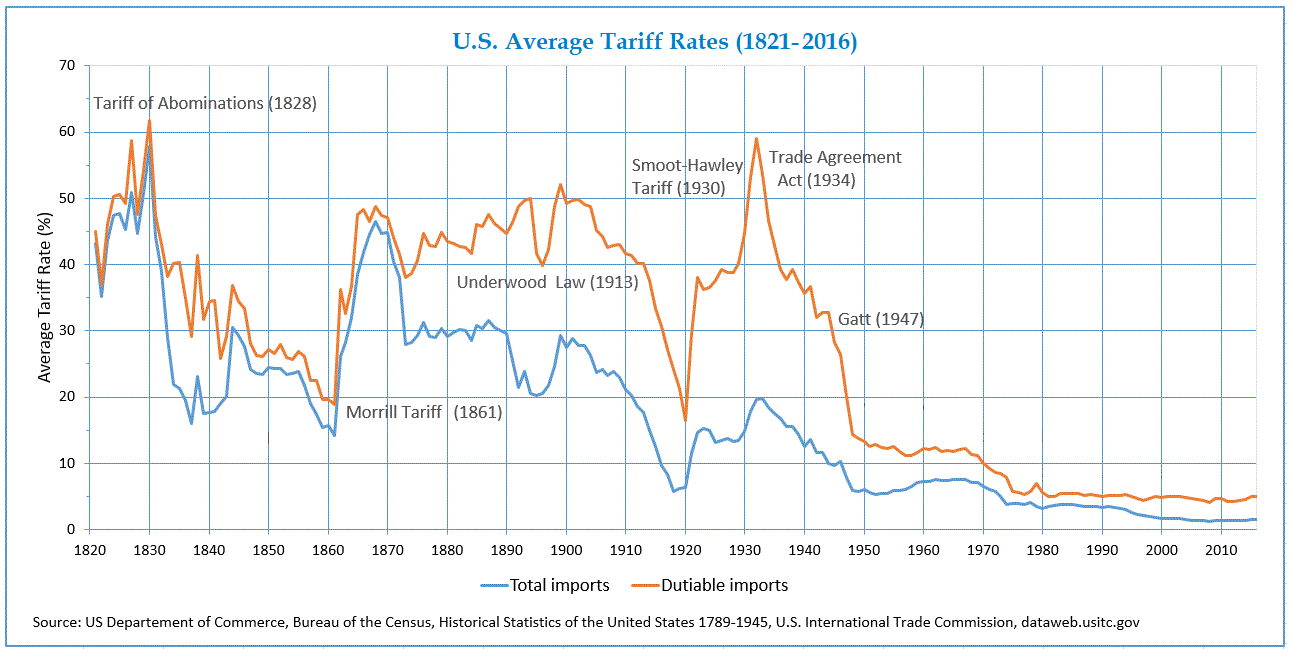Trump's China Tariffs: Projected Impact Through 2025

Table of Contents
Impact on US Businesses and Consumers
The Trump-era tariffs on Chinese goods had a multifaceted impact on American businesses and consumers, leading to both short-term gains and long-term uncertainties.
Increased Prices for Consumers
The most immediate effect of the tariffs was a rise in prices for imported goods. This direct impact on the cost of consumer products, ranging from electronics and clothing to furniture and toys, fueled inflation and reduced consumer purchasing power. The increased cost of living forced many consumers to curtail spending, impacting overall economic growth.
- Increased cost of living: Families faced higher expenses for everyday items.
- Reduced consumer purchasing power: Higher prices led to decreased demand for certain goods.
- Potential for decreased demand: Consumers sought cheaper alternatives or reduced consumption.
For example, the tariffs on washing machines led to price increases, impacting household budgets. Similarly, tariffs on steel and aluminum increased manufacturing costs, ultimately affecting the prices of finished goods. The cumulative effect was a noticeable squeeze on household finances.
Shifting Production and Supply Chains
Faced with higher tariffs, some US companies chose to relocate manufacturing from China to other countries, a process known as nearshoring or friend-shoring. This involved shifting production to countries with lower labor costs and more favorable trade agreements, such as Mexico, Vietnam, or within the US itself (reshoring). However, reshoring presented significant challenges, including higher labor costs in the US and potential supply chain disruptions.
- Increased transportation costs: Moving production further distances increased shipping expenses.
- Potential for supply chain disruptions: Relocating manufacturing is a complex process with potential delays and inefficiencies.
- Impact on small and medium-sized enterprises (SMEs): SMEs often lacked the resources to adapt to the changing landscape.
The shift in global supply chains was complex and uneven, with some companies thriving while others struggled. The long-term consequences are still being evaluated.
Impact on Specific US Industries
The impact of the tariffs varied widely across different US industries. While some sectors, particularly those competing with Chinese imports, might have experienced short-term gains, others faced significant challenges.
- Agriculture: US agricultural exports to China were severely impacted by retaliatory tariffs.
- Manufacturing: Industries reliant on imported components from China faced higher production costs.
- Technology: The tech sector experienced disruptions in supply chains and increased costs for components.
China's Response and Economic Countermeasures
China responded to the Trump administration's tariffs with its own retaliatory measures, further intensifying the trade war.
Retaliatory Tariffs and Trade Restrictions
China imposed retaliatory tariffs and trade restrictions on a wide range of US goods, targeting sectors like agriculture and manufacturing. These measures significantly impacted US exports and contributed to global trade uncertainty.
- Specific examples of retaliatory tariffs: Tariffs were imposed on soybeans, pork, and other agricultural products.
- Impact on US agricultural exports: Farmers faced reduced demand for their products in the Chinese market.
- Disruptions to global trade: The trade war created uncertainty and volatility in global markets.
Economic Diversification and Self-Reliance
In response to the trade war, China accelerated its efforts to reduce its dependence on US technology and markets. This involved significant investments in domestic industries and technological advancements, aiming for greater self-reliance and reducing vulnerability to external pressures.
- Investment in domestic industries: China increased funding for research and development in key sectors.
- Technological advancements: China accelerated its efforts in areas like artificial intelligence and semiconductor manufacturing.
- Impact on global trade relationships: China's efforts to become more self-reliant have implications for global supply chains and trade relationships.
Long-Term Global Economic Implications
The long-term consequences of the Trump-era tariffs extend far beyond the initial period, influencing global trade patterns and geopolitical dynamics.
Impact on Global Trade and Supply Chains
The trade war significantly disrupted global trade patterns and led to a restructuring of global supply chains. This resulted in increased trade tensions and a potential fragmentation of global markets, with a shift towards regional trade agreements.
- Increased trade tensions: The tariffs exacerbated existing trade disagreements between countries.
- Fragmentation of global markets: The trade war contributed to a more protectionist global economic environment.
- Regional trade agreements: Countries sought to strengthen regional trade partnerships to mitigate the risks of global trade uncertainty.
Geopolitical Consequences
The tariffs had a significant impact on US-China relations, increasing tensions and exacerbating existing geopolitical rivalries. The long-term consequences for global stability are still unfolding.
- Increased tensions: The trade war contributed to a broader deterioration in US-China relations.
- Potential for further conflicts: The trade war served as a catalyst for increased geopolitical competition.
- Impact on international cooperation: The trade war challenged the existing framework of international cooperation.
Conclusion
Trump's China tariffs, implemented between 2018 and 2020, continue to have a significant and complex impact on the global economy. While some US industries may have benefited in the short term, the long-term effects are still unfolding and are likely to reshape global trade patterns and geopolitical dynamics through 2025 and beyond. The lasting consequences for consumers, businesses, and international relations require ongoing analysis and understanding. To stay informed on the ongoing ripple effects of these trade policies, continue researching the long-term impact of Trump's China tariffs and their influence on the global market. Understanding the complexities of these tariffs is crucial for navigating the evolving global economic landscape.

Featured Posts
-
 Open Ai Facing Ftc Investigation A Deep Dive Into The Implications
May 17, 2025
Open Ai Facing Ftc Investigation A Deep Dive Into The Implications
May 17, 2025 -
 Cheap Stuff That Doesnt Suck Your Guide To Savvy Spending
May 17, 2025
Cheap Stuff That Doesnt Suck Your Guide To Savvy Spending
May 17, 2025 -
 Twm Krwz Wana Dy Armas Qst Hb Mthyrt Lljdl
May 17, 2025
Twm Krwz Wana Dy Armas Qst Hb Mthyrt Lljdl
May 17, 2025 -
 Anchor Brewing Companys Legacy Reflecting On 127 Years Of Brewing
May 17, 2025
Anchor Brewing Companys Legacy Reflecting On 127 Years Of Brewing
May 17, 2025 -
 Deepfake Detection Foiled Cybersecurity Experts Clever Technique
May 17, 2025
Deepfake Detection Foiled Cybersecurity Experts Clever Technique
May 17, 2025
Latest Posts
-
 Musks Boycott Claims Debunked Major X Advertisers Respond
May 17, 2025
Musks Boycott Claims Debunked Major X Advertisers Respond
May 17, 2025 -
 X Advertisers Dismiss Musks Boycott Accusations Nestle Shell And Others React
May 17, 2025
X Advertisers Dismiss Musks Boycott Accusations Nestle Shell And Others React
May 17, 2025 -
 Knicks Coach Thibodeau Brunson Weighs In On Job Security Speculation
May 17, 2025
Knicks Coach Thibodeau Brunson Weighs In On Job Security Speculation
May 17, 2025 -
 New York Knicks Star Player Seeks Reduced Playing Time
May 17, 2025
New York Knicks Star Player Seeks Reduced Playing Time
May 17, 2025 -
 Knicks Star Jalen Brunson Latest Injury News And Recovery
May 17, 2025
Knicks Star Jalen Brunson Latest Injury News And Recovery
May 17, 2025
